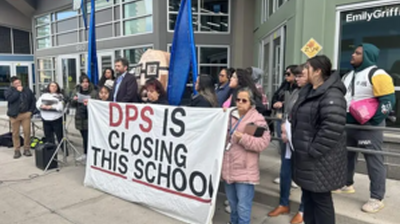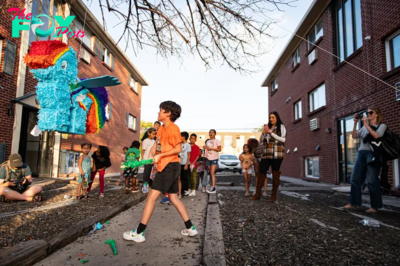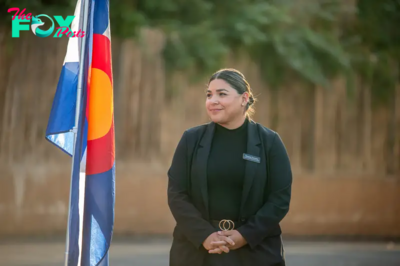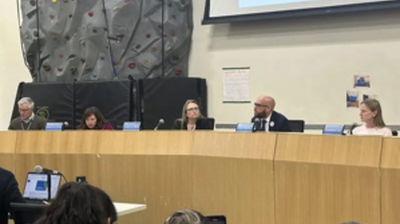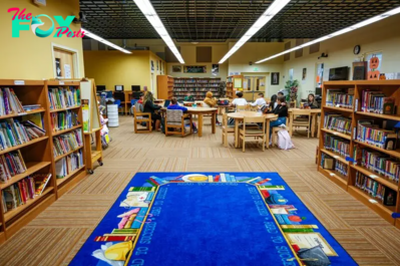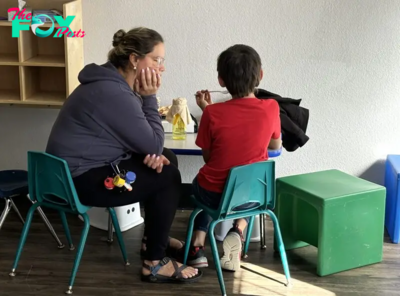Education
Forget TikTok. Crocheting is the new craze at this Colorado elementary and middle school.
Endless chatter and bursts of laughter stream far out of Room 215 each Monday afternoon at Aurora’s Challenge School, where it sounds like students might be teaming up on learning the newest TikTok dance or solidifying plans for spring break.
Instead, these elementary and middle schoolers sit in clusters surrounded by bright spools of yarn, which they’re furiously crafting into tiny hats and blankets while reviving the art of crochet.
Their teacher: 13-year-old Alexandra Schmidt, who started the crochet club at the Cherry Creek magnet school that has drawn a couple dozen of her peers. Nine students showed up to the club’s first meeting in the fall. Since then, close to 30 kids have learned how to crochet.
“It just really makes me so happy to be able to provide this service for the kids to let them unleash their creativity and do things with their hands,” Alexandra, an eighth grader, said.
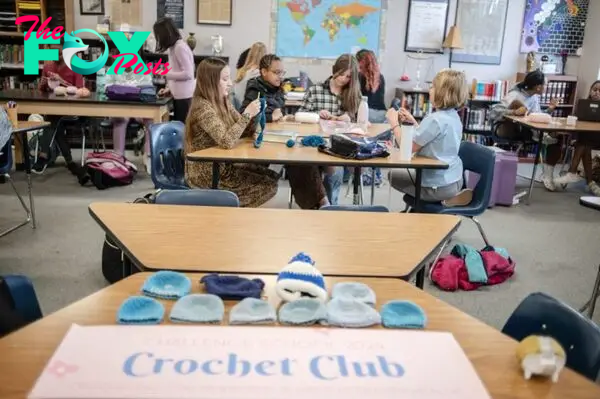
The club has become a wildly popular after-school activity at the K-8 school of more than 560 students, with teens and preteens setting aside their screens and pausing social media to pick up crochet hooks and challenge themselves to fasten yarn into pint-sized pieces of clothing. The weekly club meetings insulate students from the ever-growing pressures of school and the never-ending noise that comes with navigating childhood in an age of technology. For one hour at the start of each week, students can exhale as they settle into an antiquated hobby-turned-top-trend.
The hats and blankets they create inside the classroom and continue working on at home ultimately land in a donation pile that Alexandra and her mom take to the Denver Health Foundation to gift to the Newborns in Need program. In December, the club gave 20 hats to the program, which sends every family who gives birth at Denver Health or adopts a baby home with what’s called “a warm welcome bag” containing a variety of essentials, including diapers, wipes, blankets, clothes, a bib, hats and socks.
The bags set up babies for a healthy start in life, said Sharon Mushkin, program coordinator for Newborns in Need, which last year equipped families of more than 3,800 babies with necessities. Challenge School students are helping families have access to the basics they need at a time many have to pick between buying food, diapers or clothes, Mushkin said.
“It’s so important for kids to learn very young how important it is to give back, especially for those of us that are able,” she said. “And there are so many people out there that need assistance.”
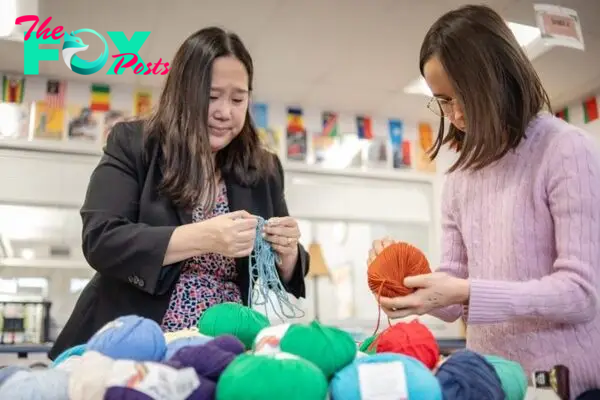
Alexandra launched the club in October, turning a skill she picked up and polished during the isolating days of the pandemic into a craze that has swept through her school. She has mastered a long list of crochet projects, including scarves, beanies and amigurumi — small stuffed yarn Animals and toys.
“My drive to crochet comes in big spurts, and then I simmer down,” she said.
She formed the crochet club as a way to pass on her passion for fabric arts to classmates and also do something meaningful for her community. She and her mom, Tung Chan, who helps run the club, expected no more than a handful of students to attend the first meeting. Now, about 20 students regularly fit the crochet club into their week, and it has built up a bigger following than the mother-daughter pair ever anticipated.
“It’s taken off and seems to have a real place in these kids’ lives now,” Chan said.
“An hour of productive joy”
Chan has watched as crocheting has given her daughter a lasting sense of purpose, particularly after it brightened the bleak days of the pandemic.
“It was an outlet where she could be creative and expressive, and it had a physical result so she had a toy at the end,” Chan said. “It was such a hard time, and something so beautiful came out of it.”
With a history of dabbling in knitting, Chan learned how to crochet alongside Alexandra. It didn’t take long for her daughter to outpace her with yarn and crochet hooks in hand.
While Alexandra teaches her classmates how to work with their crochet sticks, her mom buys the colorful array of yarn. It’s nothing new for parents and teachers to pitch in with supplies and snacks and pay other expenses so that kids have a free activity after school.

Across most schools, an adult sponsor must oversee clubs, so extracurriculars need teachers, volunteers or parents who will step up “to provide a little structure and support,” Rebecca Holmes, president and CEO of the nonprofit Colorado Education Initiative, wrote in an email to The Colorado Sun.
Their efforts go a long way in rounding out a child’s education, Holmes wrote, noting that research shows that kids who participate in extracurricular activities have better attendance and grades and graduate at higher rates.
☀️ READ MORE
Amid influx of students new to the U.S., English development teachers in Colorado feel overwhelmed
Some young people have become Colorado book collectors without realizing it. Here’s their chance to win $1,000.
Leaving Colorado foster care is a fraught time for young adults
“For so many kids, an extracurricular club, just like a sport, can serve an important role as the best part of their day or just a part of their day where they get to engage and show up differently than they otherwise might in a more traditional academic setting,” she said.
-

 Education2d ago
Education2d agoWhat would it mean if President-elect Trump dismantled the US Department of Education?
-

 Education5d ago
Education5d agoPhiladelphia students have a new reading and writing curriculum − a literacy expert explains what’s changing
-

 Education5d ago
Education5d agoWhy school police officers may not be the most effective way to prevent violence
-

 Education1w ago
Education1w agoCampus diversity is becoming difficult to measure as students keep their race and ethnicity hidden on college applications
-

 Education1w ago
Education1w agoFederal judge rules that Louisiana shalt not require public schools to post the Ten Commandments
-
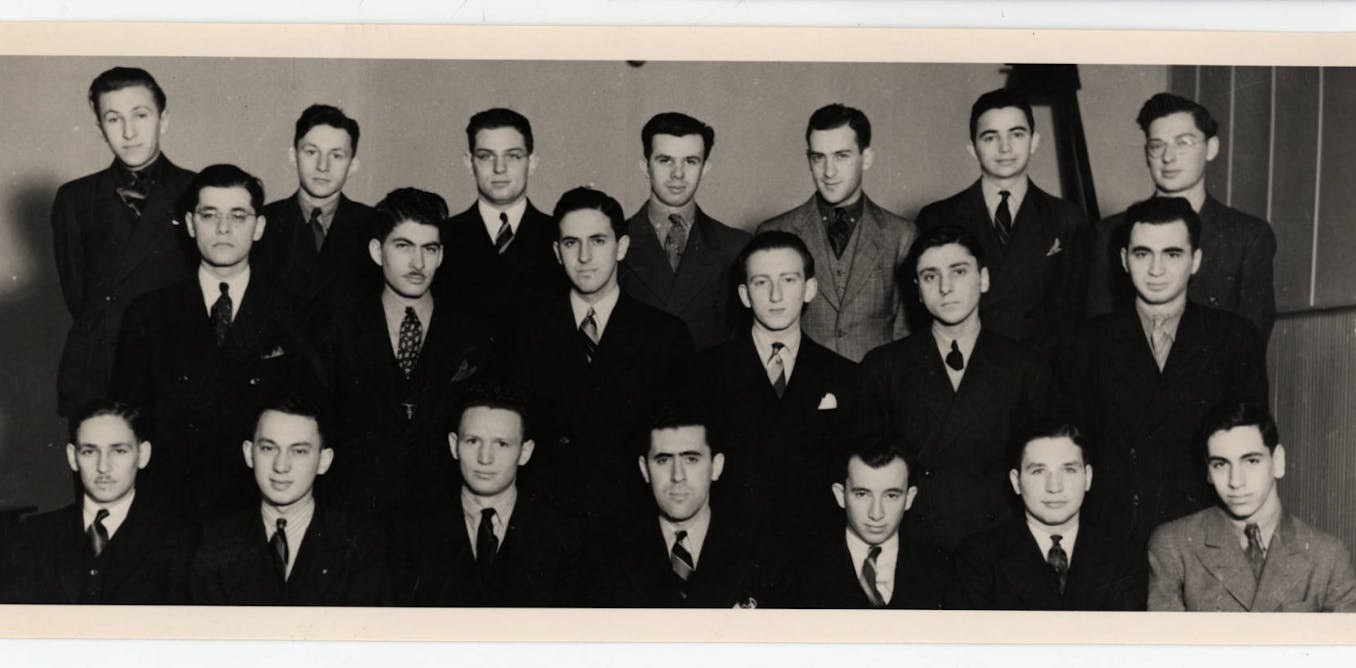
 Education1w ago
Education1w agoCampuses are ground zero in debates about antisemitism − but that’s been true for 100 years
-

 Education1w ago
Education1w agoSocioeconomic status explains most of the racial and ethnic achievement gaps in elementary school
-

 Education1w ago
Education1w agoMothers, metaphors and dyslexia: What language reveals about the challenges of a child’s learning disability
